Key takeaways
- The Wendigo symbolizes insatiable greed and highlights human struggles with isolation and desperation.
- Originating from Algonquian folklore, the Wendigo serves as a cautionary figure against selfishness and emphasizes the importance of community in times of crisis.
- Encounters with the Wendigo often invoke feelings of dread and reflection on personal vulnerabilities, blurring lines between myth and reality.
- Respecting nature and sharing stories fosters community connection, countering the isolating fears represented by the Wendigo legend.
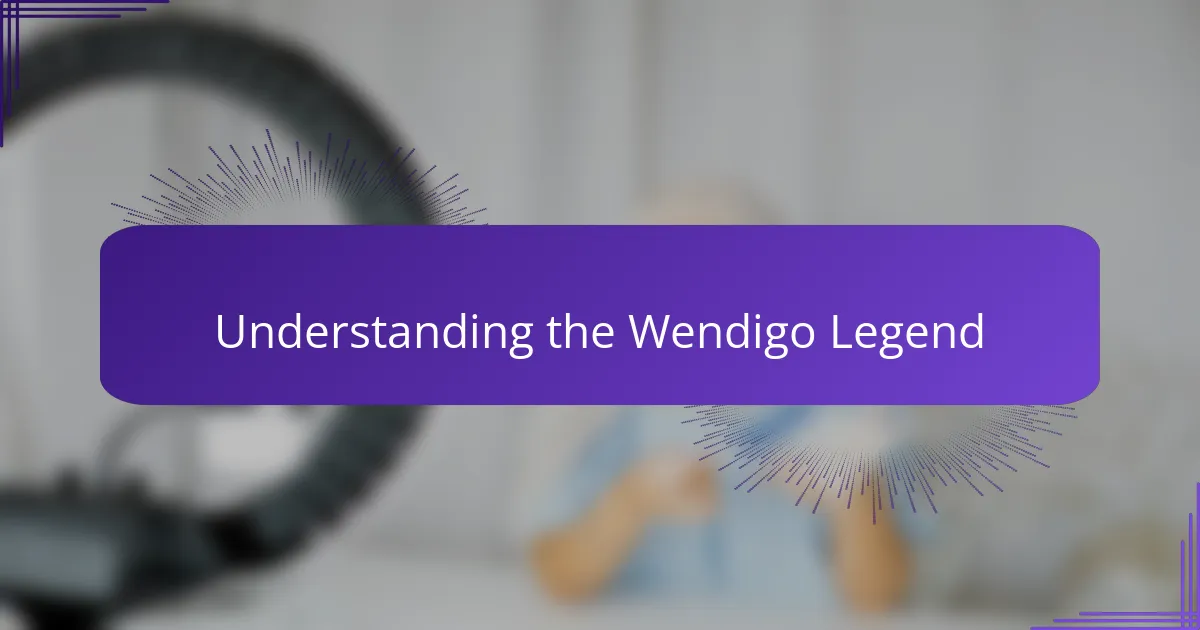
Understanding the Wendigo Legend
The Wendigo legend has always struck me as more than just a scary story—it’s a powerful symbol rooted deep in indigenous folklore. I remember first learning that the Wendigo embodies insatiable greed and hunger, almost like a warning against losing oneself to darker desires. Isn’t it fascinating how such a creature can reflect very real human struggles?
What I find particularly haunting is how the Wendigo is described as this gaunt, skeletal figure with an eerie presence, almost as if nature itself is warning us. In my experience, understanding this creature means grasping not just the physical descriptions but the emotions tied to it—desperation, isolation, and the thin line between humanity and monstrosity. Have you ever considered how legends like this reveal our cultural fears in such vivid ways?
The Wendigo’s connection to winter and starvation makes me think about how environment shapes myth. Growing up in a region where harsh winters were a reality, the Wendigo felt less like fiction and more like a cautionary tale. When I reflect on that, I can almost feel the cold creeping in, reminding me of the fragile balance between survival and succumbing to the darkness within.
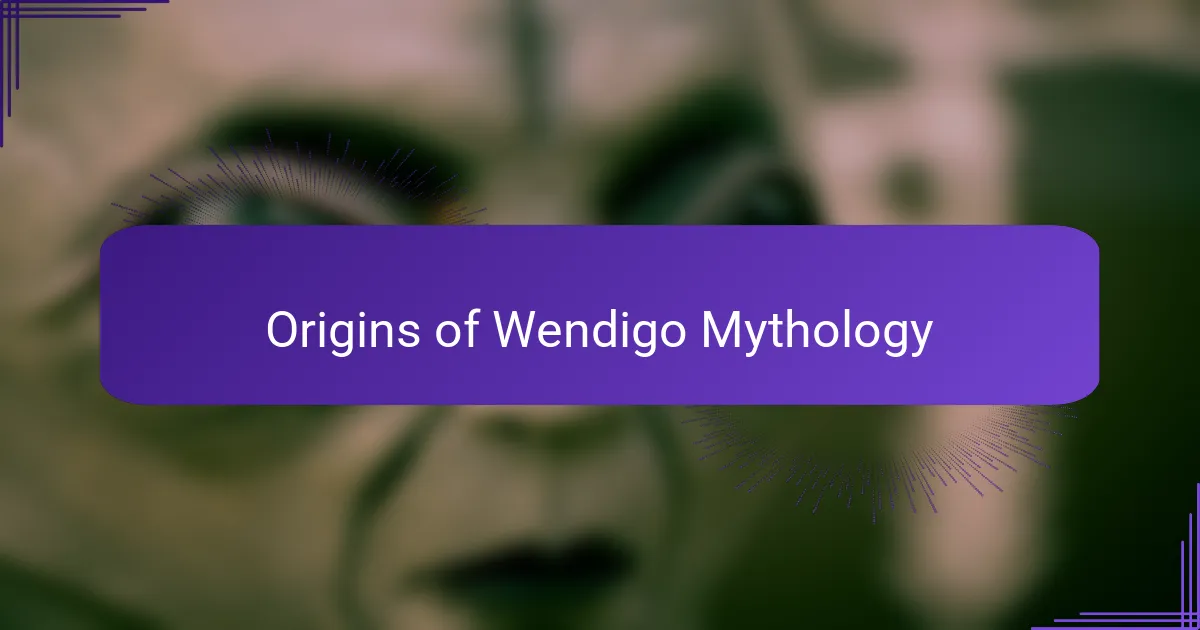
Origins of Wendigo Mythology
The origins of Wendigo mythology trace back to the indigenous peoples of the Algonquian language group, who lived in the dense forests and frozen winters of North America. I’ve always been intrigued by how such harsh environments can birth stories like the Wendigo, which seems to embody the very real threat of winter starvation and isolation.
What struck me most in my research was how the Wendigo was not just a monster but a cautionary figure against selfishness and greed. It made me wonder—how often do myths serve as mirrors for our own moral struggles? For those people, the Wendigo wasn’t just folklore; it was a serious warning to maintain community and respect nature during desperate times.
The more I delved into the story, the more I appreciated how these early tales captured deep human fears using vivid symbolism. The Wendigo represented not only physical hunger but also an emotional and spiritual emptiness, something I think anyone facing extreme loneliness or desperation can relate to on some level. Doesn’t that make the myth feel surprisingly personal and timeless?
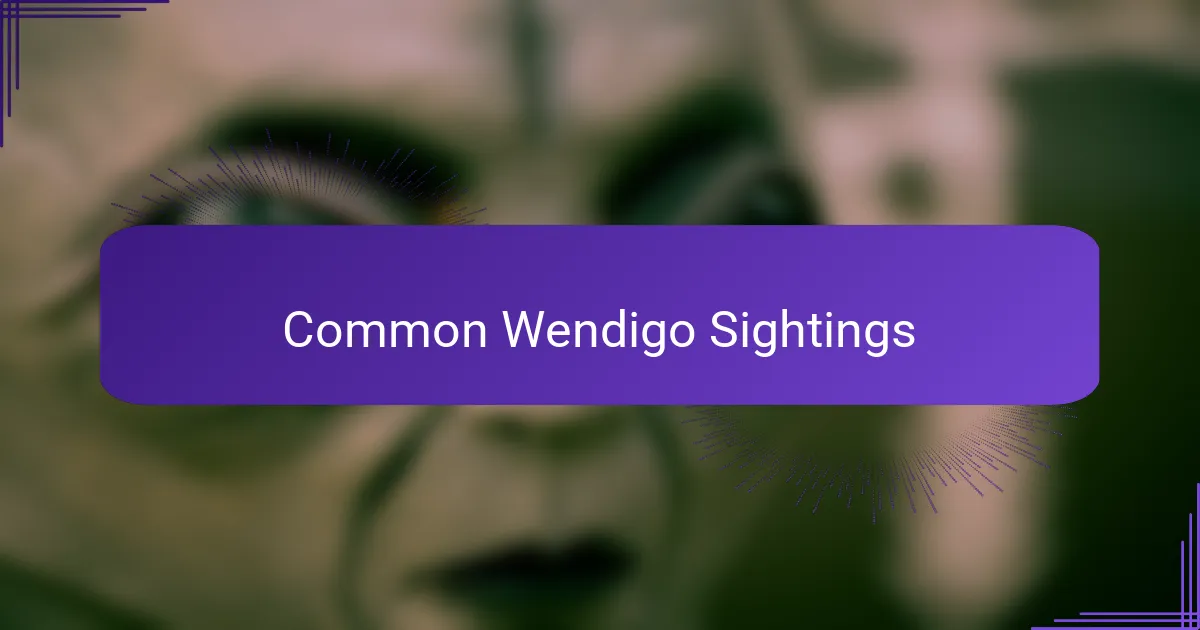
Common Wendigo Sightings
I’ve come across countless accounts where folks describe fleeting glimpses of a tall, gaunt figure lurking just beyond the tree line, its hollow eyes reflecting a chilling emptiness. What always gets me is how these sightings often happen during the coldest, loneliest nights—almost like the Wendigo thrives in our most vulnerable moments.
Sometimes, the witnesses talk about hearing unsettling sounds—like eerie howls or unnatural clicking—that seem to echo through the dense forests. I’ve felt that kind of silence before, and it’s bone-chilling; it makes you wonder if those noises are warnings or invitations from something beyond our understanding.
What’s even more fascinating to me is how these sightings don’t just happen in one place. People from vastly different backgrounds recount eerily similar experiences, which makes me think: could these encounters be more than just stories passed down? Maybe the Wendigo is a universal symbol, striking a primal chord deep within us all.
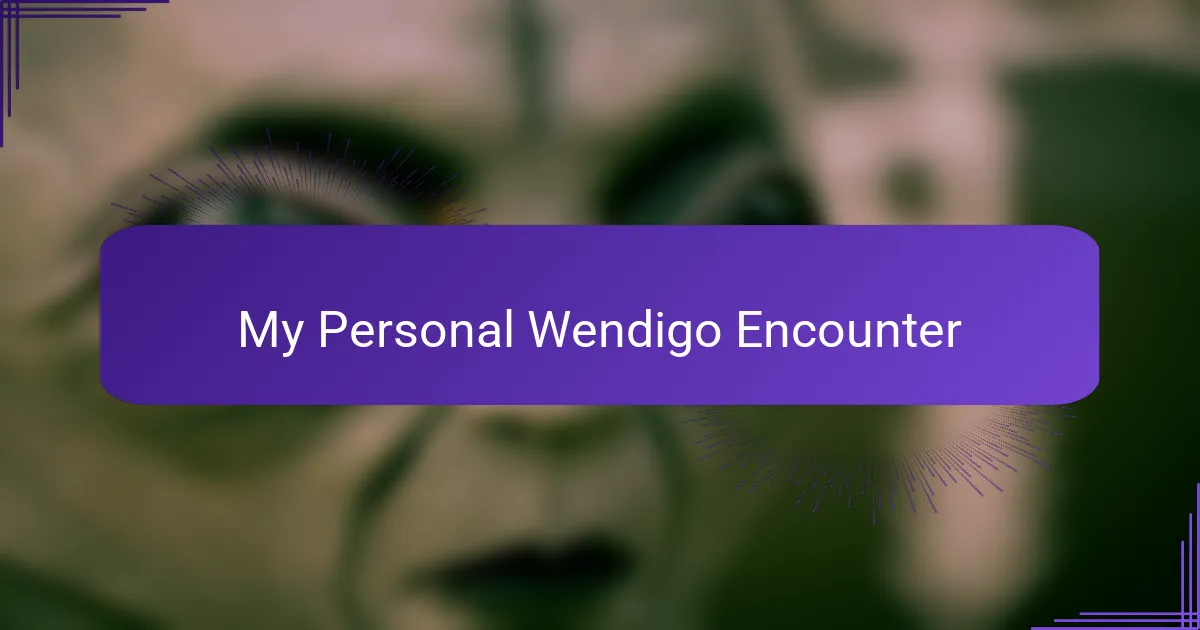
My Personal Wendigo Encounter
The night I first felt the Wendigo’s presence still lingers vividly in my mind. I was alone in a remote cabin, the wind howling outside and the darkness pressing in like a living thing. Suddenly, I caught a glimpse of a shadowy figure—tall, thin, with eyes that seemed to suck the warmth from the cold air—and for a heartbeat, I was frozen in a mix of fear and fascination. Have you ever been so unsettled that every sound feels like a warning?
What struck me most during that moment wasn’t just the appearance of the creature but the overwhelming sense of isolation it brought. It was as if the Wendigo wasn’t just an external threat but a mirror reflecting my own fears of loneliness and desperation. In hindsight, I realize how deeply these emotions connect to the legend—that creeping feeling of losing oneself to an insatiable hunger, whether for survival or something darker.
After that encounter, I found myself questioning the boundaries between myth and reality more than ever. Was it truly the Wendigo, or was it my mind conjuring the legendary figure in a place so steeped in eerie silence? Either way, the experience taught me how powerful these stories can be, embedding themselves in our psyche and shaping the way we understand our innermost anxieties. Have you ever experienced something that blurred the line between the natural and the supernatural?
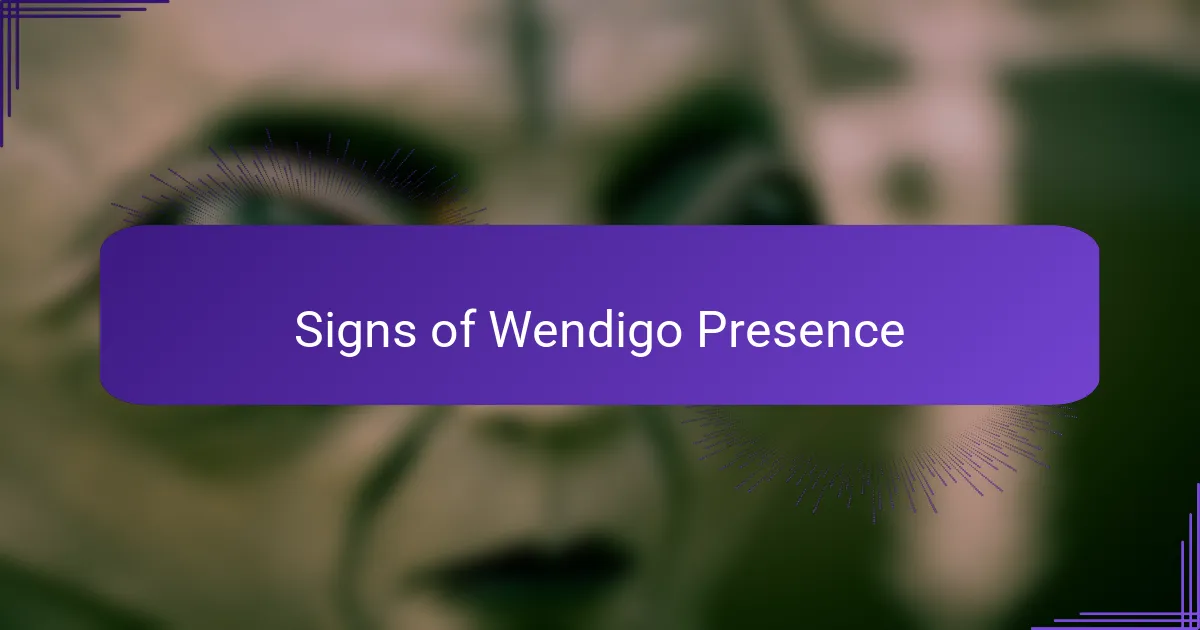
Signs of Wendigo Presence
One of the first signs that grabbed my attention was the sudden drop in temperature, like the warmth of the world was being sucked away. It wasn’t just cold—it was a deep, unnatural chill that settled into my bones, making me wonder if the Wendigo’s presence was more about the atmosphere than the creature itself.
Then there’s the eerie silence—a silence so heavy it almost roars in your ears. When I experienced it, all the usual forest sounds vanished, replaced by a suffocating quiet that felt less like peace and more like a warning. Have you ever noticed how the absence of noise can make you more aware of the things lurking just out of sight?
But perhaps the most unsettling sign was the overwhelming feeling of dread and isolation. It’s like the Wendigo feeds not just on flesh, but on fear and loneliness too. Standing there, I felt pulled toward a dark edge inside myself, a hunger that wasn’t physical but almost spiritual. Isn’t it strange how a legend can make you confront your own darkest emotions in such a visceral way?
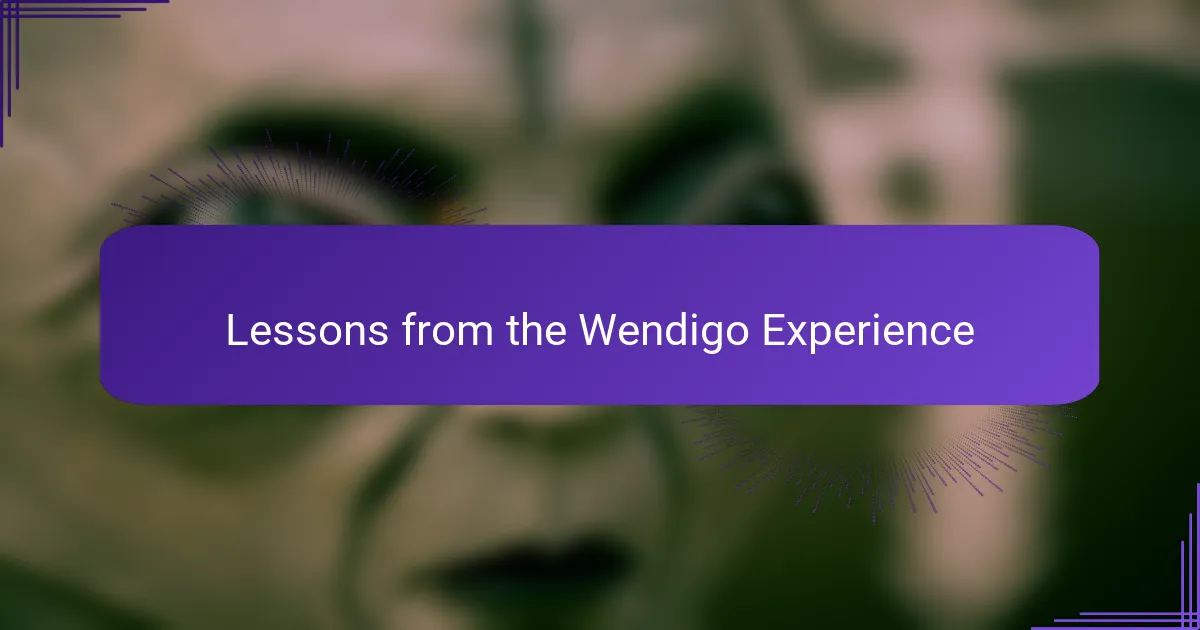
Lessons from the Wendigo Experience
What really stayed with me from the Wendigo experience is how it forced me to confront the darker parts of human nature—those impulses toward greed and isolation that we often try to ignore. It made me wonder: how often do we let these shadows creep in when we feel desperate or alone? That realization felt unsettling but also strangely enlightening, like the legend was holding up a mirror to my own vulnerabilities.
Another lesson I took away was the importance of community and connection. The Wendigo isn’t just about a monster stalking the woods; it’s a warning about losing touch with others and ourselves. When I thought about my own life, I realized how easy it is to become emotionally starved even in a world full of people. Have you ever felt that loneliness growing inside, as if you’re slowly turning into something unrecognizable?
Lastly, the experience taught me to respect the environment in a deeper way—not just as a backdrop for scary stories but as an active force shaping our fears and hopes. The cold, the silence, that biting chill—they aren’t just setting the scene; they’re part of the Wendigo’s power. It made me appreciate how intertwined we are with nature and how its rhythms can reflect what’s happening inside us. Isn’t it fascinating how a myth can reveal such profound truths about both the world and ourselves?
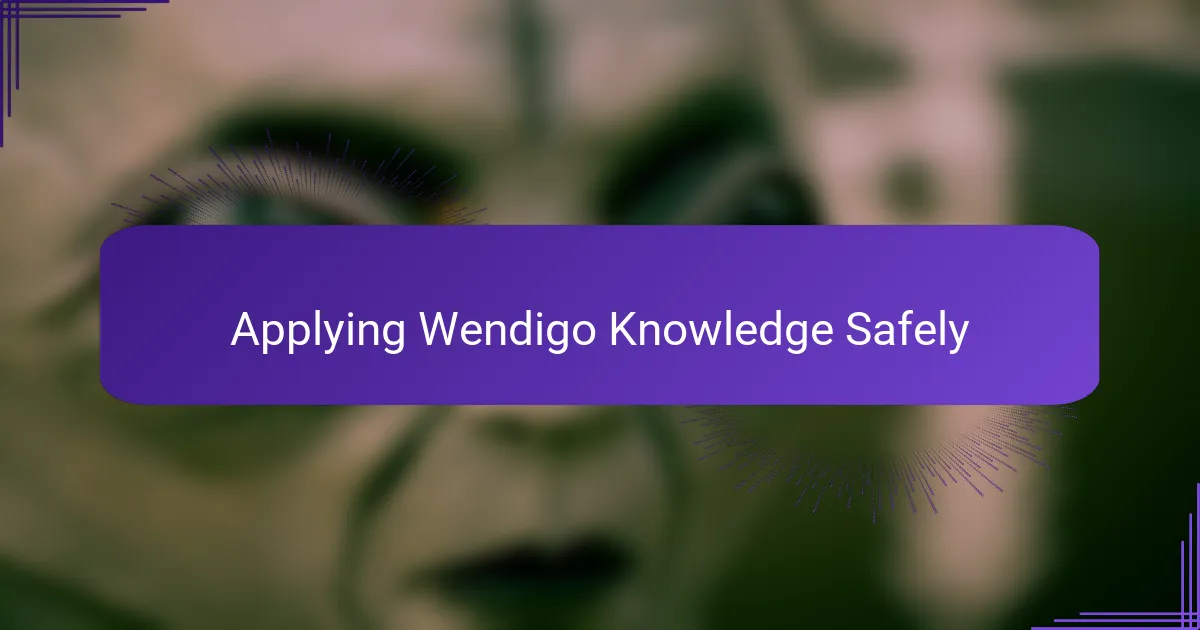
Applying Wendigo Knowledge Safely
When it comes to applying Wendigo knowledge safely, I’ve found that respecting boundaries—both physical and psychological—is crucial. Diving too deep or seeking out the unknown without preparation can stir up more fear than insight. Have you ever felt that chill of curiosity mixed with caution? That balance is key.
In my experience, grounding yourself in reality helps keep these legends from overwhelming your mind. I make a point to separate the symbolic lessons from any literal fears, reminding myself that the Wendigo embodies warnings about human nature rather than being a roaming beast. This mindset shift has saved me from spiraling into paranoia during those quiet, isolated moments in the wilderness.
Finally, I believe sharing these stories with others creates a protective layer, transforming personal encounters into shared wisdom. When I talk openly about what I learned, it not only demystifies the experience but also reinforces the message about community and connection—the very antidotes the Wendigo myth warns us to hold onto. Don’t you think that’s a powerful way to honor the legend without inviting danger?